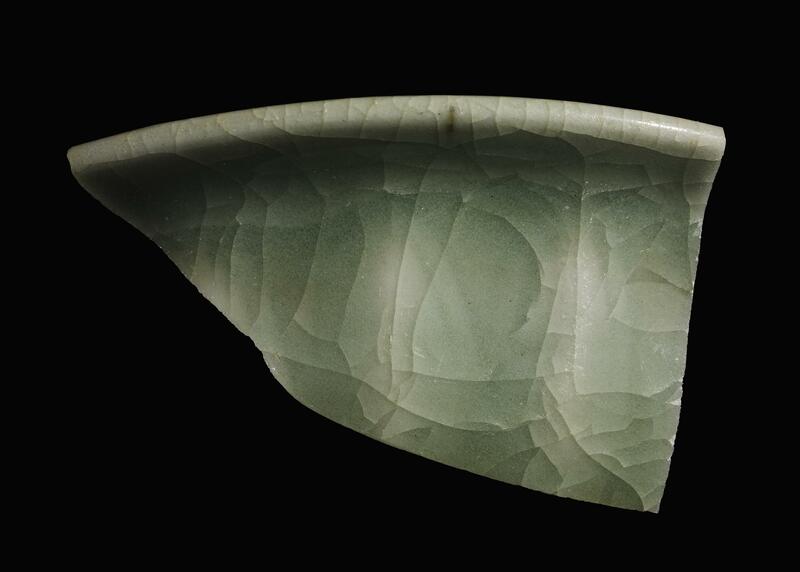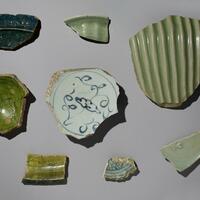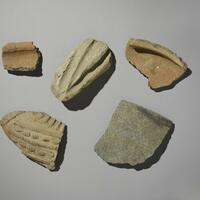Ceramic fragments from Kilwa Kisiwani
Date:
Tenth to fourteenth century
Location or Findspot (Modern-Day Country):
Tanzania
Medium:
Stoneware,
Earthenware
Description:
Ceramic fragments from Kilwa Kisiwani, an island off the coast of modern-day Tanzania, offer clues to the types of goods exchanged as part of the Indian Ocean trade network connecting East Africa to the Arabian Peninsula, India, and China. Trade with Kilwa began as early as 800. Traders from this major port exchanged gold, iron, ivory, and slaves for luxury vessels as well as less durable goods such as cottons from India and Chinese silks.
The different fragments reproduced here not only come from different regions but also reflect gradual changes in patterns of trade. The dark green and blue pieces arrived via the Persian Gulf and Red Sea, and arrived at Kilwa primarily between the ninth and eleventh centuries. The "blue and white" wares and pale green porcelain pieces are from China and represent thirteenth- and fourteenth-century trade. The brown unglazed pieces decorated in high relief are local products from East Africa.
The different fragments reproduced here not only come from different regions but also reflect gradual changes in patterns of trade. The dark green and blue pieces arrived via the Persian Gulf and Red Sea, and arrived at Kilwa primarily between the ninth and eleventh centuries. The "blue and white" wares and pale green porcelain pieces are from China and represent thirteenth- and fourteenth-century trade. The brown unglazed pieces decorated in high relief are local products from East Africa.
Relevant Textbook Chapter(s):
5,
6,
9
Repository and Online Resources:
• These fragments are in the collection of the British Museum.
• Listen to a podcast on these fragments in the BBC series, "A History of the World in 100 Objects."
• Visit the website of the Zamani Project for 3D models, plans, and photographs of the Kilwa Kisiwani ruins.
Image Credits:
© Trustees of the British Museum






